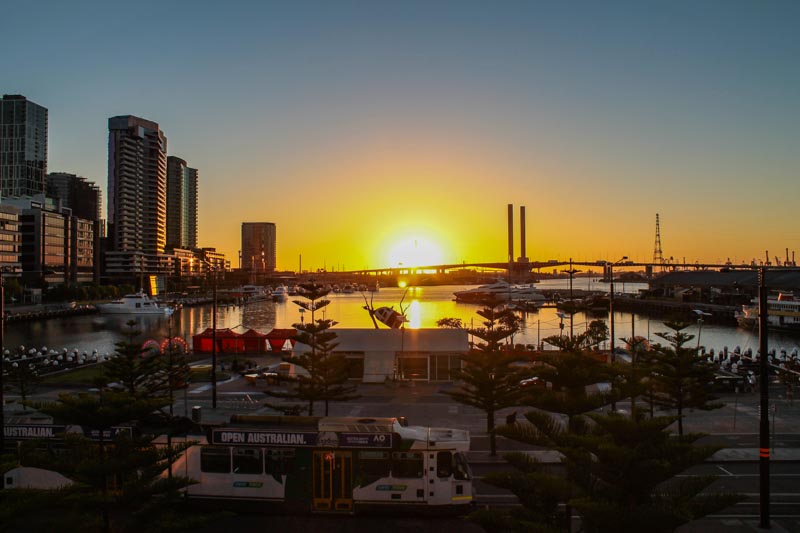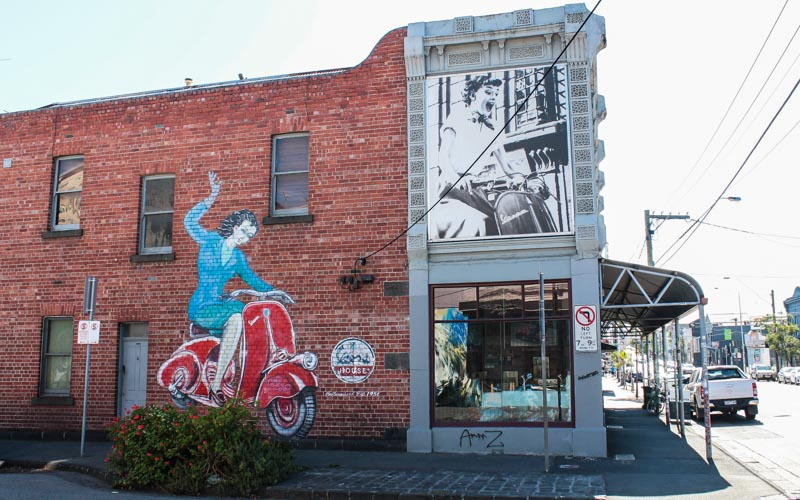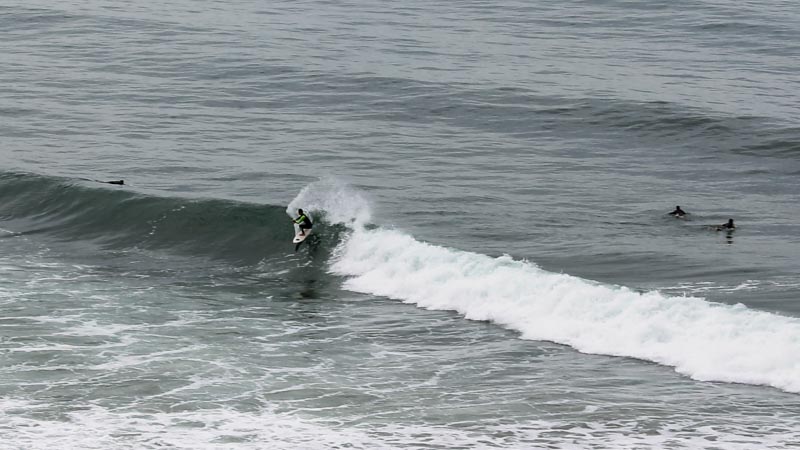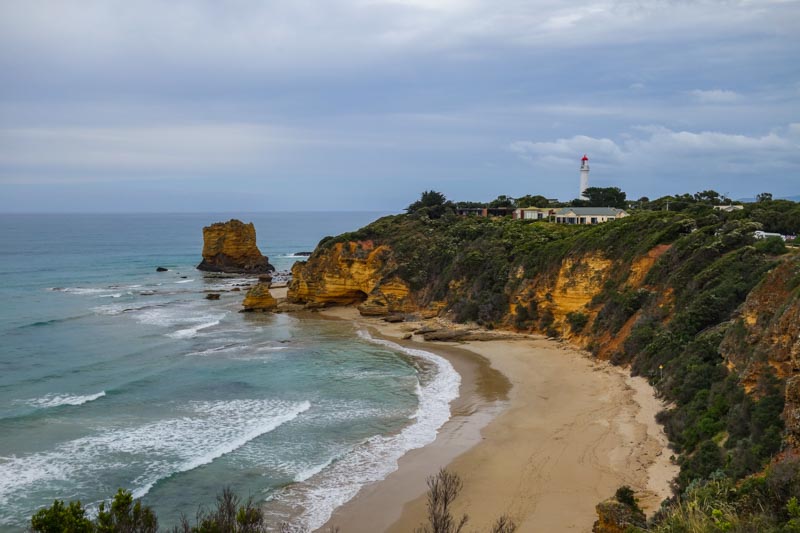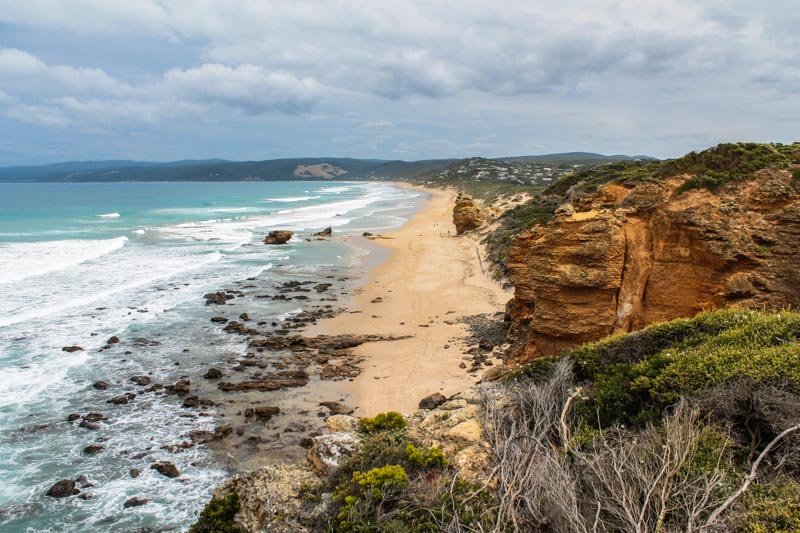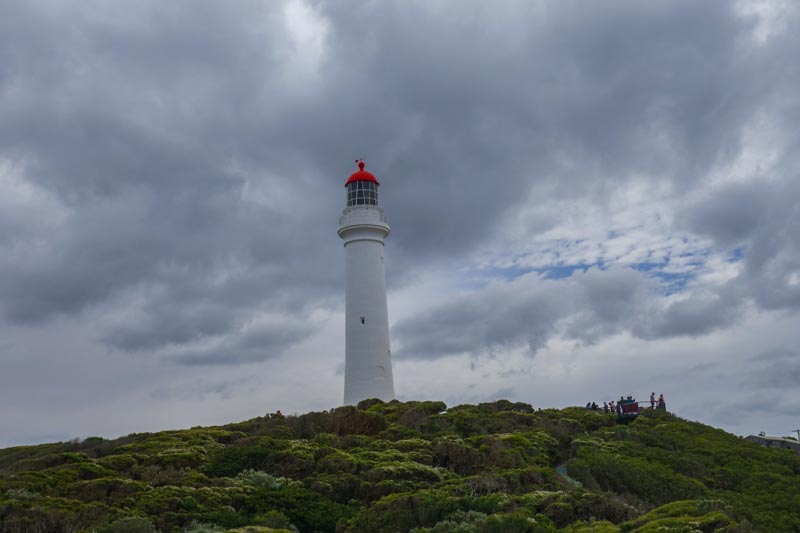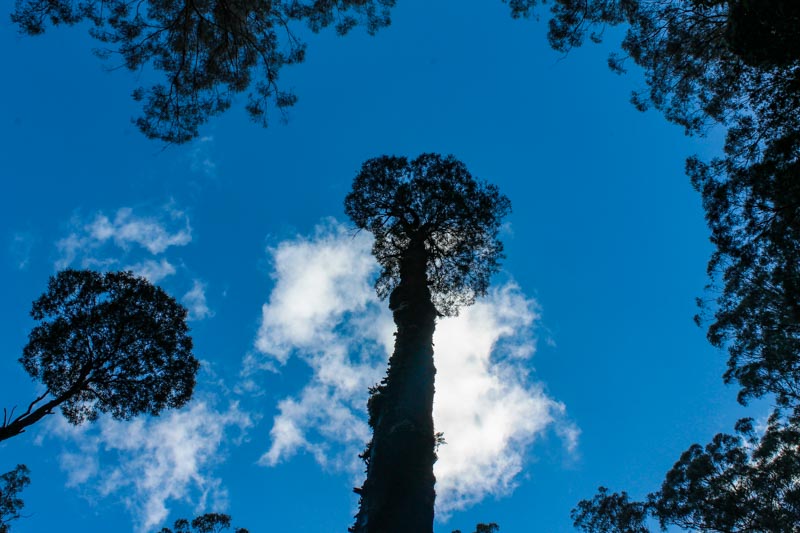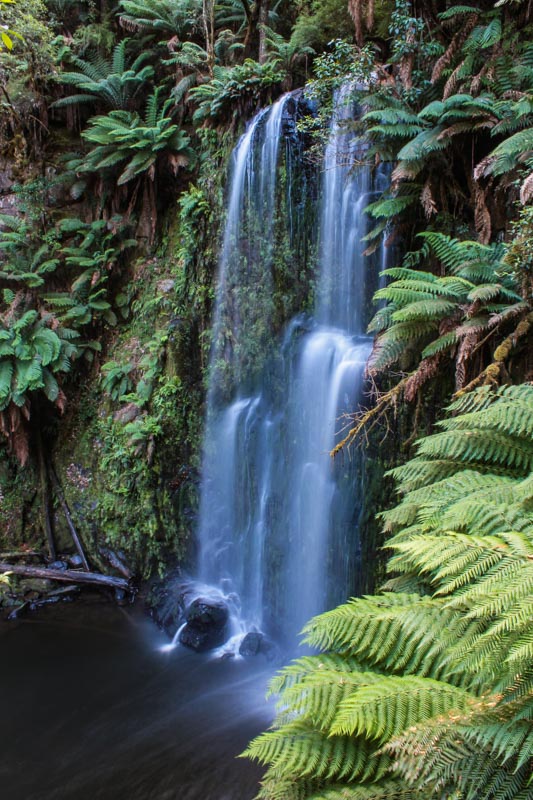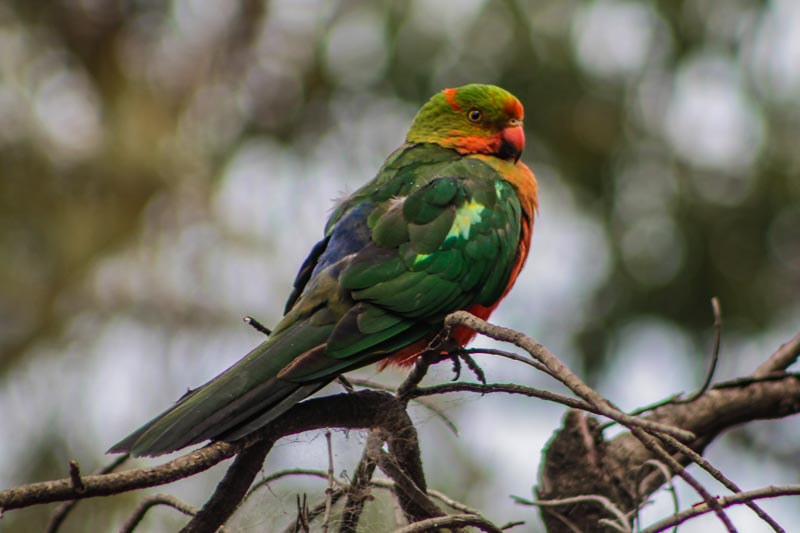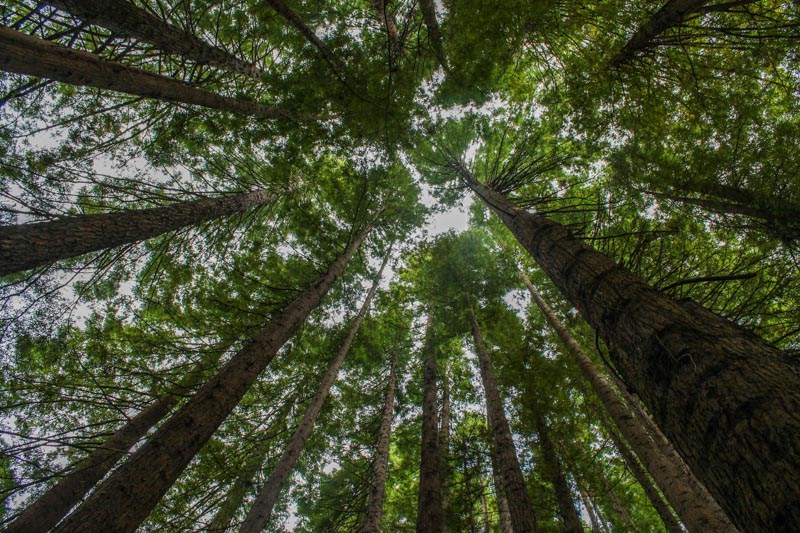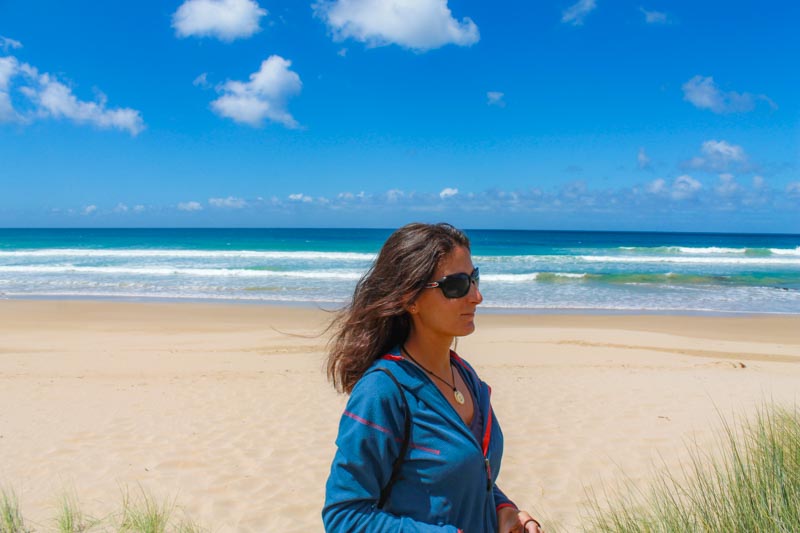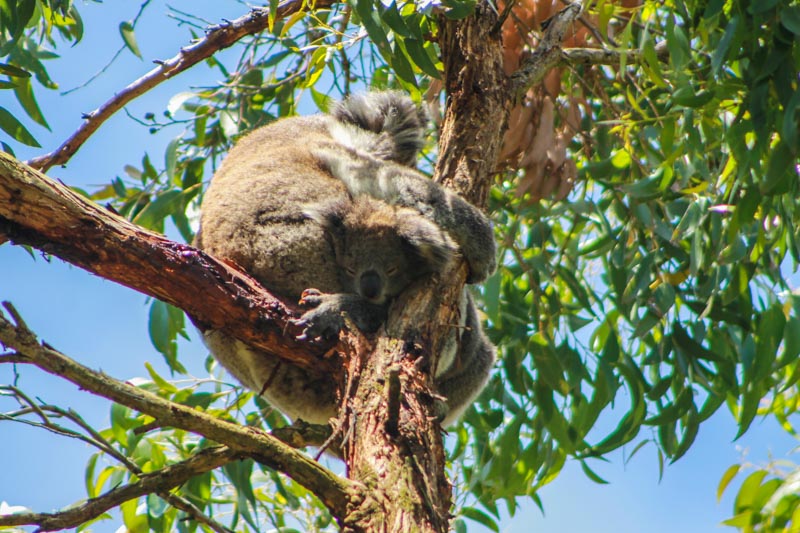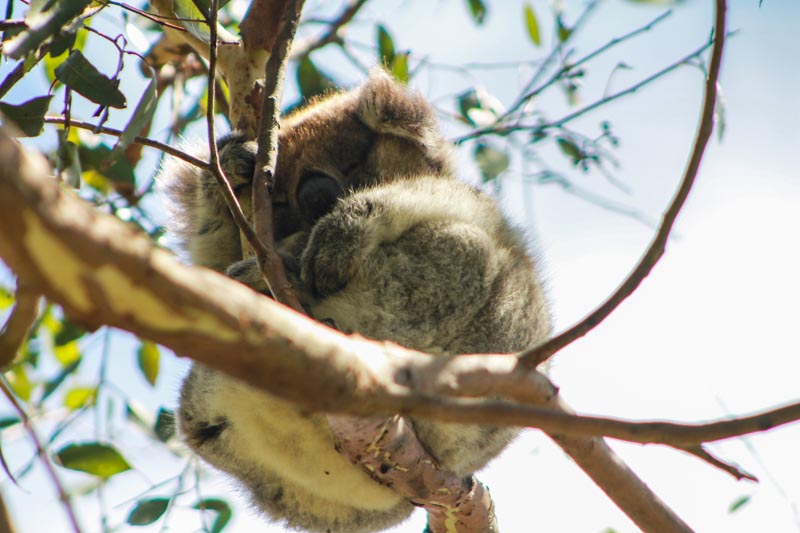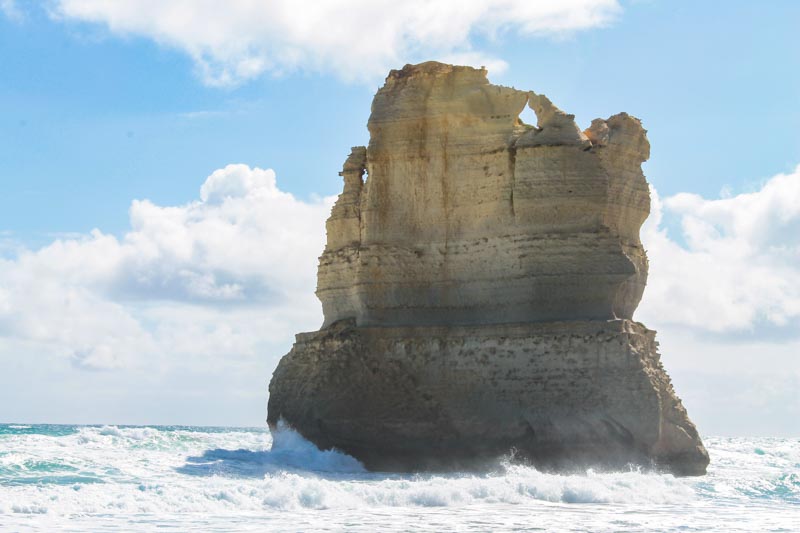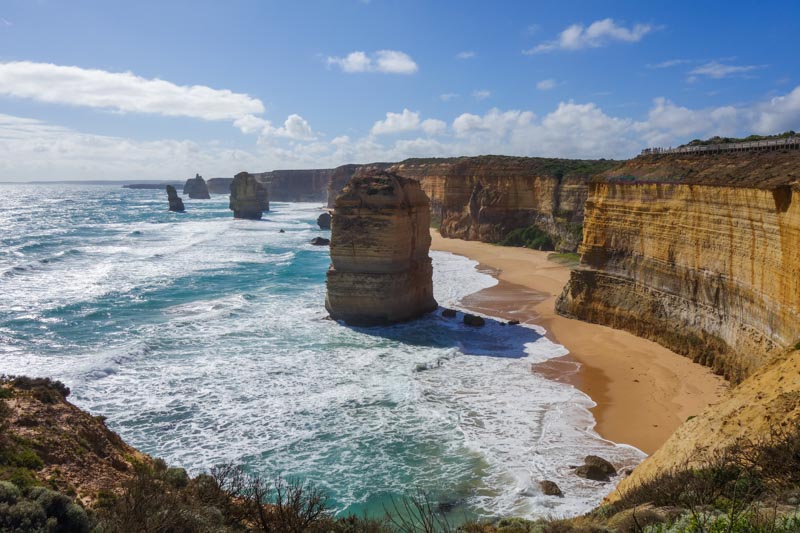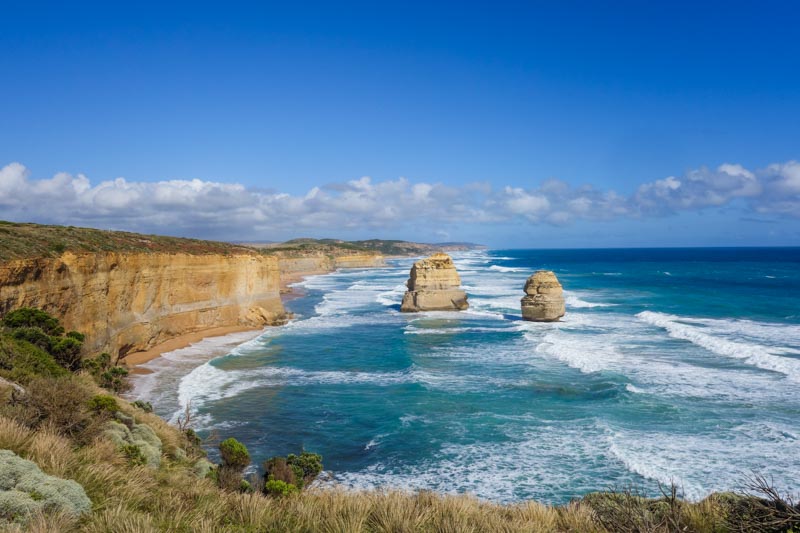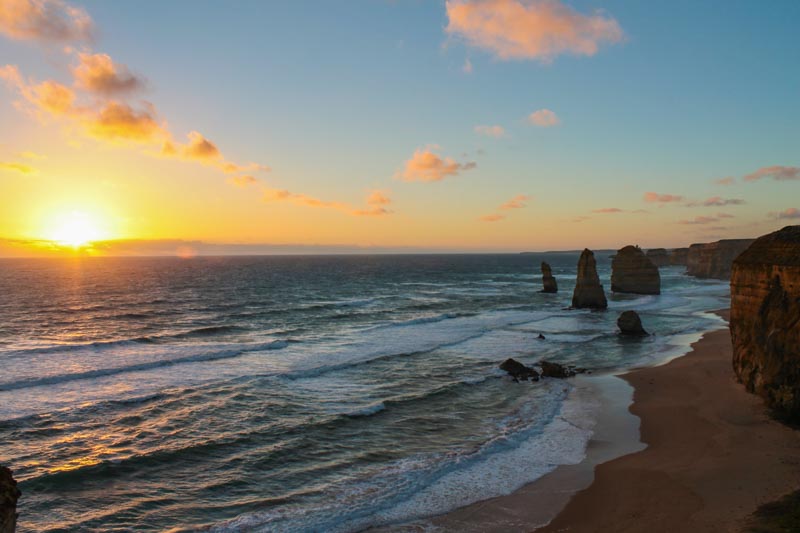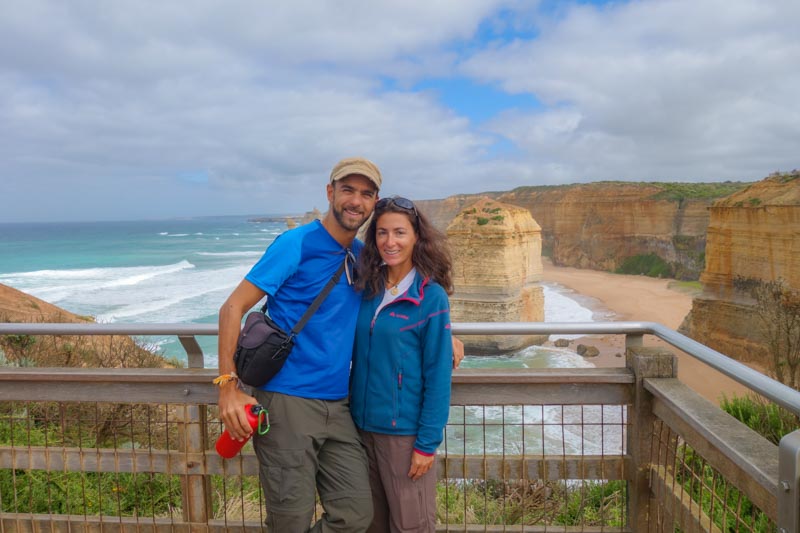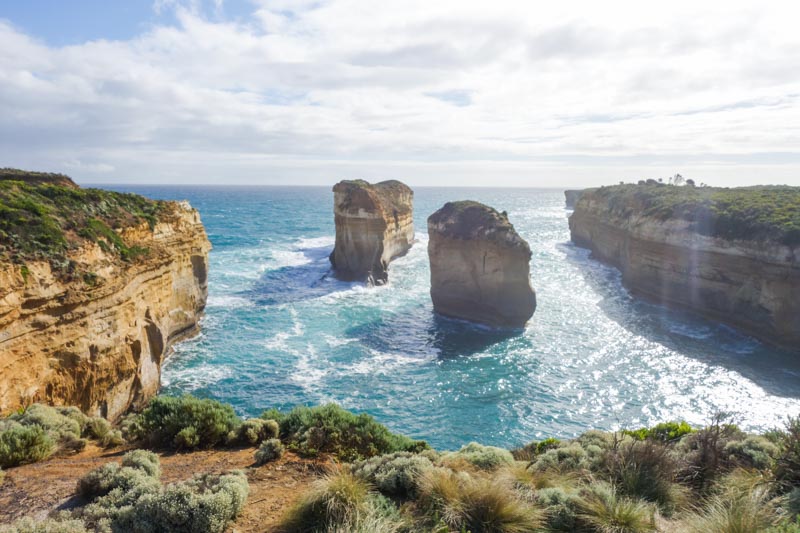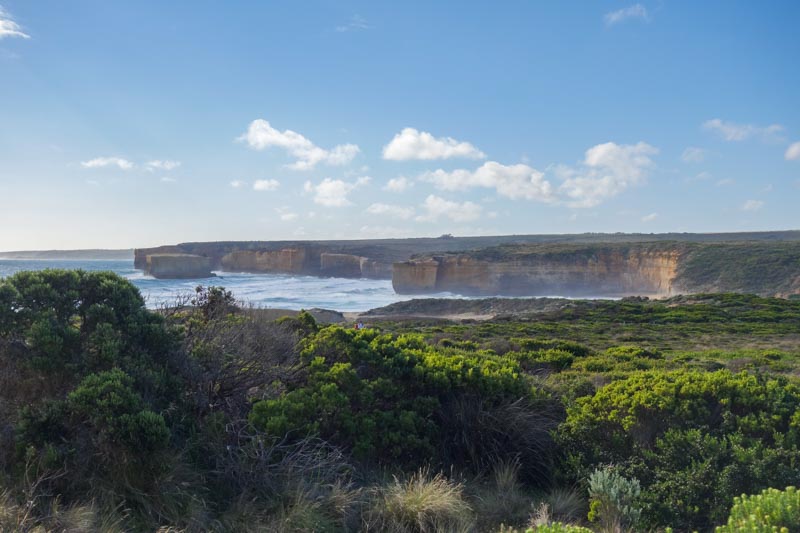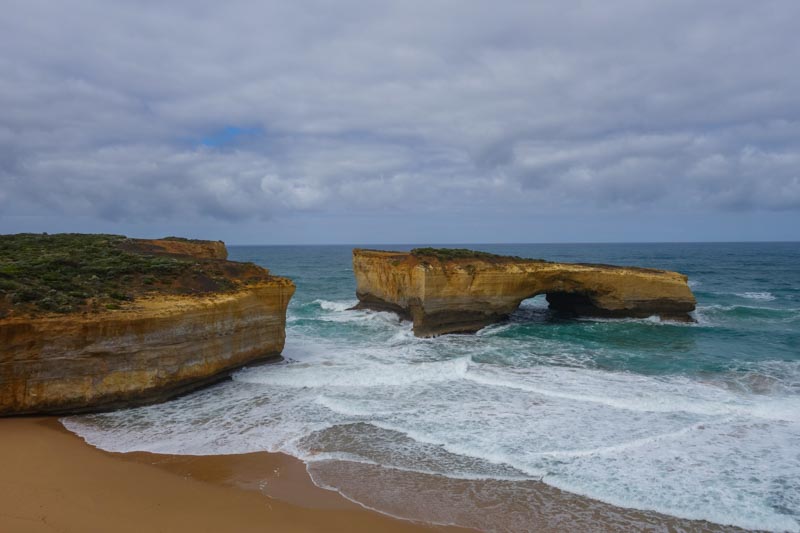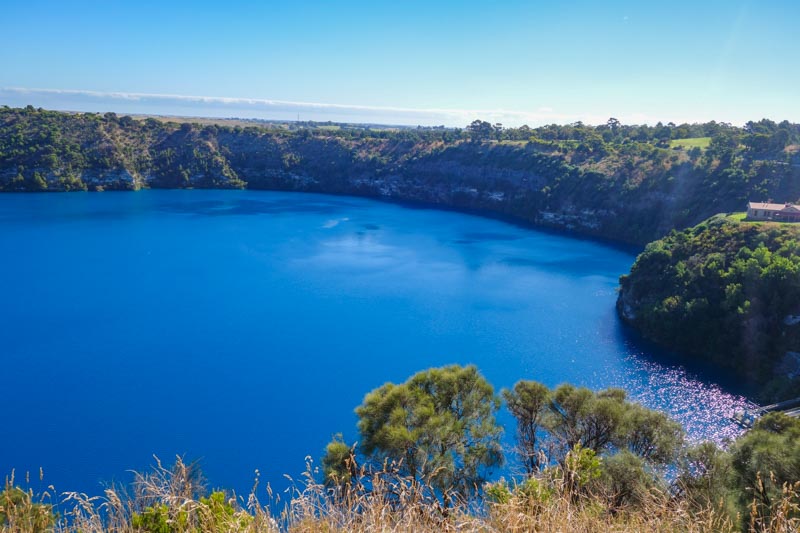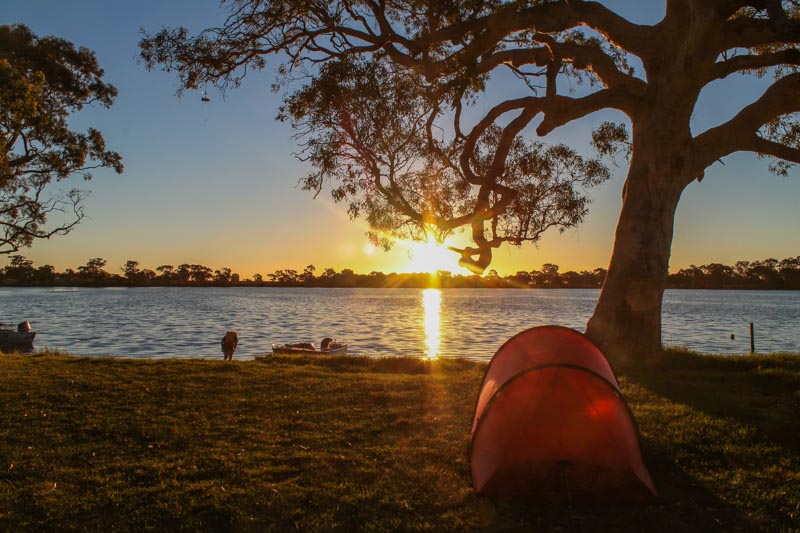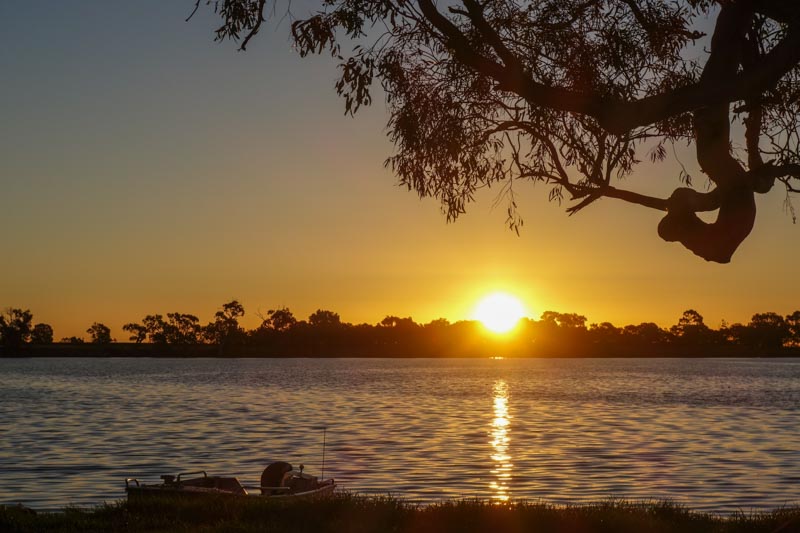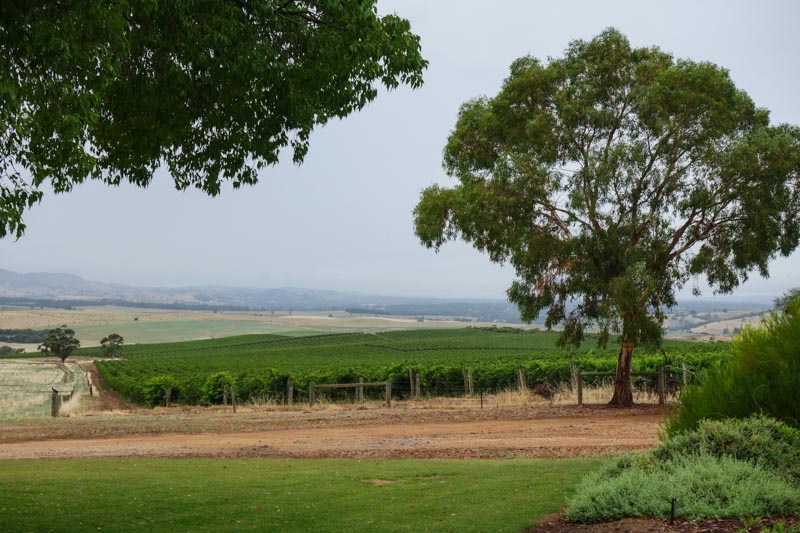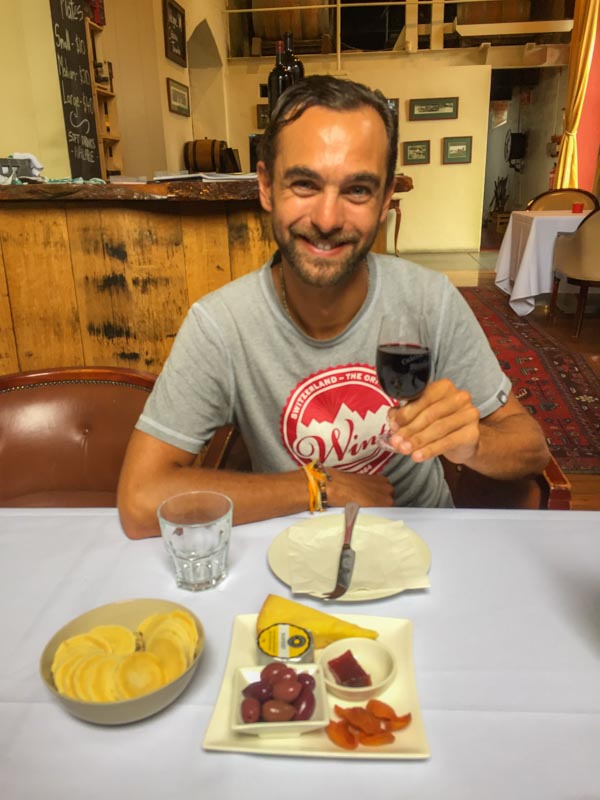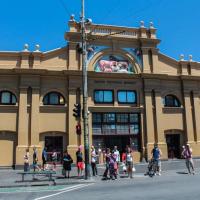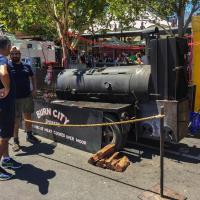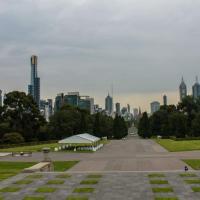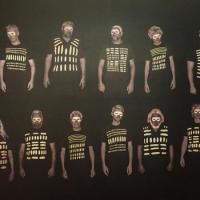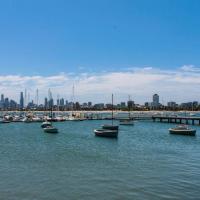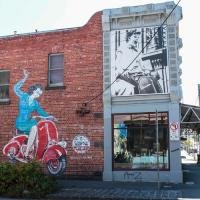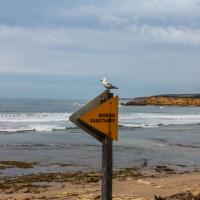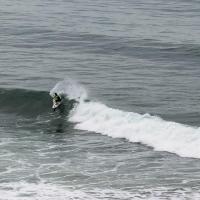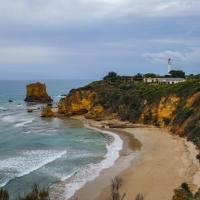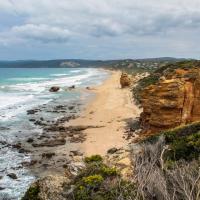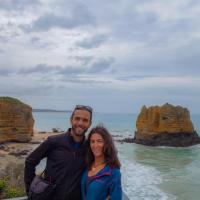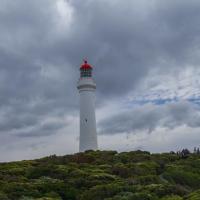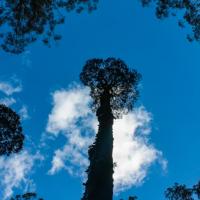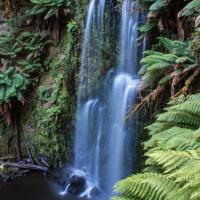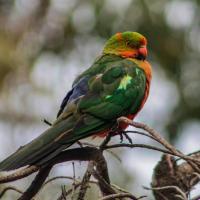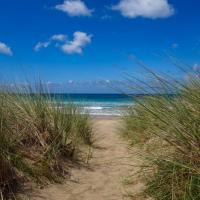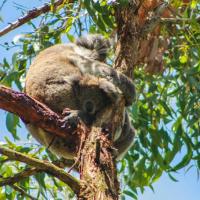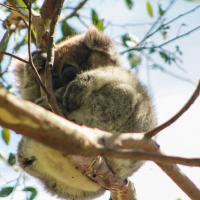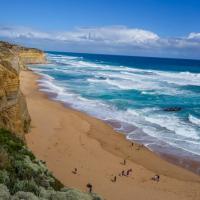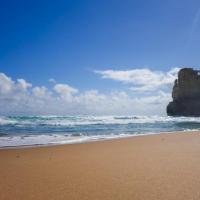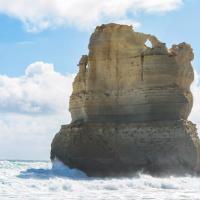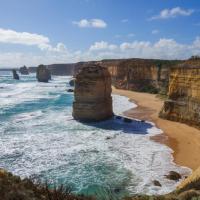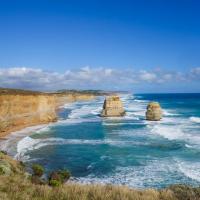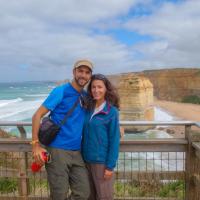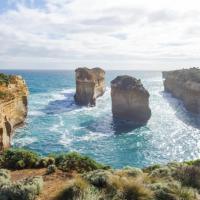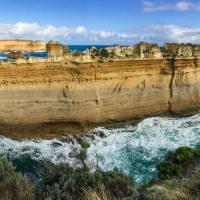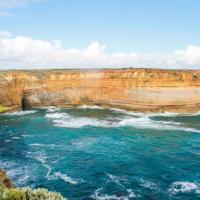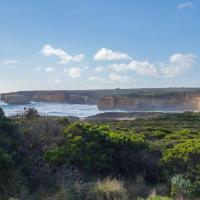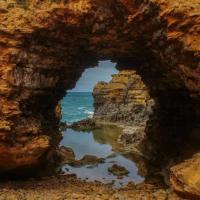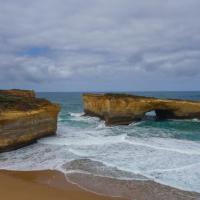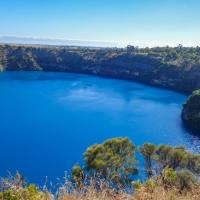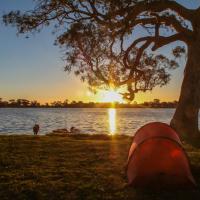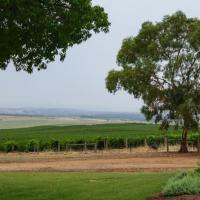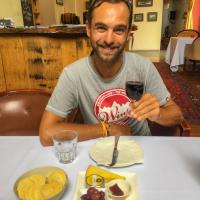Melbourne
Air Calin had brought us safely to our first Australian destination in the state of Victoria: Melbourne. After Sydney the second biggest city, Melbourne has a lot to offer: sightseeing, shopping, food and drinks, beach and catching up with old friends. We stayed in a hostel in St. Kilda, about 30min by tram from the city and close to the beach. Upon check-in we were tempted to lie about our age because all other people staying at the hostel were the classical "work-and-travel-tourists" born in the mid 90ies looking way too young to travel by themselves. We felt a bit like grandma and grandpa, but well, we see it positively that we are still up for adventures :).
We spent three nights in Melbourne and had quite a list to work off that Alida and Kale, our Aussie friends from the Inle Lake trek in Myanmar, had prepared for us. We started with the Botanical Gardens and the Shrine of Rememberance (a war memorial), then walking around the CBD (Central Business District) watching the busy life on the shopping streets of Melbourne. We went to a public viewing of the final of the Australian Open (which actually took place in Melbourne) and to see all the street artists along the river where the Chinese celebrated their New Year!
The following days we did a lot of walking and checked out Queen Victoria Market where a barbecue festival was taking place as well as the hip neighborhood of Collingwood with many nice coffee places, stylish shops and bars and restaurants. Then we walked all the way to the Abbotsford Convent which is now not used as a convent anymore, but is a cute place to hang out with nice bars and restaurants in a beautiful garden setup. We finished off watching the sunset at the docklands and eating some yummie dumplings in Chinatown. The next day we went out to yet another interesting neighborhood, Brunswick, checked out an Aboriginal art exhibition at the Ian Potter Foundatioj and were happy to meet Alida in the evening for drinks and dinner in Collingwood. Thanks for taking your time to meet us, it was great to see you again!
As much as we loved the bustling city life with all the cute little lanes, alleys, arcades and hundreds of tempting cafés, bars, bistros and restaurants, it was affecting our budget ;) and we were as well keen on heading out and explore some of the vast landscape and countryside Australia has on offer. After a morning walk around St. Kilda beach we therefore picked up our little rental car, a reliable and very economical Hyundai i20 and drove out direction Great Ocean Road. We had brought our camping equipment with us to save a bit on the accomodation cost and Alida had recommended us an app that would show us all paying and free (!) campgrounds in Australia. Thank you, these 5€ were the best investment ever. We have been sleeping at some of the most stunning places away from civilisation, doubting we were actually on the right road, free of charge!
Usually the free campgrounds did not offer many facilities or sometimes none at all. Sometimes you had dry toilets, more rarely you found toilet paper and every now and then there was running water. So we assume that some of you (probably not all but quite some) will wonder how we did with showering, washing the dishes and brushing our teeth. Fair point! The back seats of our little Hyundai were filled with supplies and one 10l cask of drinking water and one 10l cask of tap water (easy refill at fuel stations) which was usually not treated and not drinkeable, but good enough for cooking, washing the dishes or brushing our teeth. For shower we had several options:
1) in the cooler climate of southern Victoria we did not shower for 2-3 days and used wet wipes to clean delicate body parts before going to sleep;
2) in urgent cases we used some of the 10l tap water for a cat bath;
3) sometimes we stumbled across public toilets with showers;
4) we went to paying campgrounds and asked if we could only use the showers which was usually possible against a small fee;
5) we went to a paying campground whenever we needed more facilities anyway (washing machines, shower, electricity).
And it worked perfectly fine. We had an adapter for the cigarette lighter so we could charge our phones, laptop, ipad and even Moni's camera. The only thing we were truely missing was a fridge! Drinking warm water is not fun, but you survive it. However, we really wanted to buy yoghurt, fresh fruits and veggies, salad, white wine and cool beer, ham, cheese, etc. We sometimes bought fresh stuff and ate it immediately for lunch or put it in our iso bag to keep it as cool as possible for dinner, but we never bought meat or other eaisly perishable goods. In terms of fruits we sticked to apples, bananas and pears that were a bit more resistant, so we still ate healthy and managed to vary our dishes instead of eating pasta every day.
And of course, as we were camping in the bush of Australia, the country with the biggest selection of deadly animals, we applied some house (or tent) rules:
1) Food stays in the car to not attract any animals into our tent;
2) Any stuff we need with us during the night goes with us into the sleeping compartment, the rest goes back to the car. The less surface we give to insects, spiders, snakes or scorpions to hide in our belongings the lower the risk of getting biten.
3) Shoes stay in the awning, which means every morning we need to do the "shoe-check" to make sure no scorpion or other creepy creature is hiding in there.
4) When going to the bush for toilet, always stomp like an elephant to give those creatures the chance to move away before we cross their paths.
5) Only in emergency cases should we go to the toilet at night (as you see even less stuff around).
Great Ocean Road
That clarified, let's get back on the road. We headed out of Melbourne to reach the south coast of Australia where during the gold rush so many ship sunk because of weather and rough sea. The weather for us was quite changing as well, we had sunshine and clear sky as well as wind and rain, but overall it was fine. However, we were amazed by the fact that beginning of Febuary (still summer) the nights were already so chilly. After Asia and New Caledonia we were freezing our ... off with 12 degrees at night, so we were happy to wrap up in our thick sleeping bags.
The first stop on the way was Torquay and Bells Beach where each year THE surfing competition in the world takes place. We watched some brave surfers and continued to Lorne, which is a bit the Saint Tropez of Great Ocean Road. We stopped at the visitor center to get some hiking brochures for the area and saw a cute sleepy koala hanging around the tree just in front of the building!!! We saw some more koalas in their eucalyptus trees on our way and even a koala mama with her baby at Cape Otway! Just too cute these little fluffy bears.
Over the course of 2 days we visited a massive Californian Redwood forest, the Beauchamps Falls, Split Point Lighthouse and Cape Otway before reaching what most people truely associate with Great Ocean Road: The south coast where you find the world-famous 12 Apostels. We also took our time there and within two days climbed down the Gibson steps to a wild beach, shared the platform at the 12 Apostels with many other tourists, walked around different viewpoints at Loch Ard Gorge, saw the broken London Bridge and admired the view through The Grotto. And then we officially left Great Ocean Road and carried on along the south coast via Warrnambol to Mount Gambier where we admired the truely blue volcanic crater lake.
Barossa Valley & Clare Valley
Heading up north we crossed into South Australia and drove through the small wine region of Coonawarra which is famous for its world-class Cabernet Sauvignon. That day was one of the ones where Wikicamps was leading us through gravel roads that looked like private property and we ended up spending the night at one of the most remarkable free campgrounds: at beautiful Cockatoo lake. As there are no free campsites in Barossa Valley and we anyways needed a shower we had decided to try couchsurfing and ended up staying in the large and cozy house of Will and Kelly-Ann together with two young American winemakers right in the middle of the wine region.
The weather was quite rainy throughout the next two days so we were happy to sleep in the dry and it was as well a good excuse to be inside all the different cellar doors and try some good wines. Barossa Valley is probably the most famous wine region in Australia with most of the biggest wineries in the area (South Australia producing more than 50% of the country's wine). The signature grape is Shiraz, a full body, heavy and very spicy red wine. But we also tried some other amazing red wines, like the Spanish Tempranillo that seems to like the Australian climate and grows really well. Many wineries also produce white wine, mainly Riesling, which is usually not grown in Barossa Valley itself but either in Eden Valley or Clare Valley, tiny close-by appelations where the vineyards sit between 200m to 400m higher and produce excellent whites. And we even found an old and completely forgotten French grape - Savagnin (no, it is not a misspelling of Sauvignon as we thought) - that produces an easy-to-drink and semi-dry white wine.
As there are around 150 properties in the region, it was impossible to do all of them and we had a hard time in choosing which wineries to try and which ones to skip. We did some research ourselves to find some smaller properties where the tastings are usually more familiar and no tasting fees apply. And of course we relied on advice from Will and Kelly-Ann and the two Americans also gave us some good tips. A very charming winery was the small Pindaries property and excellent red wine was served at Torbreck's. And we spent one hilarious evening at the winemaker's house next door - we brought lasagne, the others provided the wine. At this point thanks first of all to Will and Kelly for hosting us. Your house was super charming and both of you were incredibly friendly and it felt as if we had known you for much longer than just 2 days! And thanks to Cary and Tyler, our two Americans, and the funky neighbour, was so much fun meeting you!
After 1,5 days wine tasting we left Barossa Valley and headed further inland on our way to the Red Center. As we were practically passing through Clare Valley, we stopped at yet another winery to do a white wine tasting and then we really had to hit the road. Outback was calling, so be prepared for some crazy stories and great pictures from our ~3500km adventure trip in 7 days.
Talk to you soon!
Moni & Alex
 Hai gehören in Australien zum täglichen Leben dazu, man darf trotzdem so gut wie überall Wellenreiten (Berufsrisiko quasi). Das Wasser ist halt ziemlich kalt :).
Hai gehören in Australien zum täglichen Leben dazu, man darf trotzdem so gut wie überall Wellenreiten (Berufsrisiko quasi). Das Wasser ist halt ziemlich kalt :). Oh... Wellenreiten! An so einem Strand natürlich noch toller :D Durfte man das dort oder gilt es als "haiverseucht"?
Oh... Wellenreiten! An so einem Strand natürlich noch toller :D Durfte man das dort oder gilt es als "haiverseucht"?
